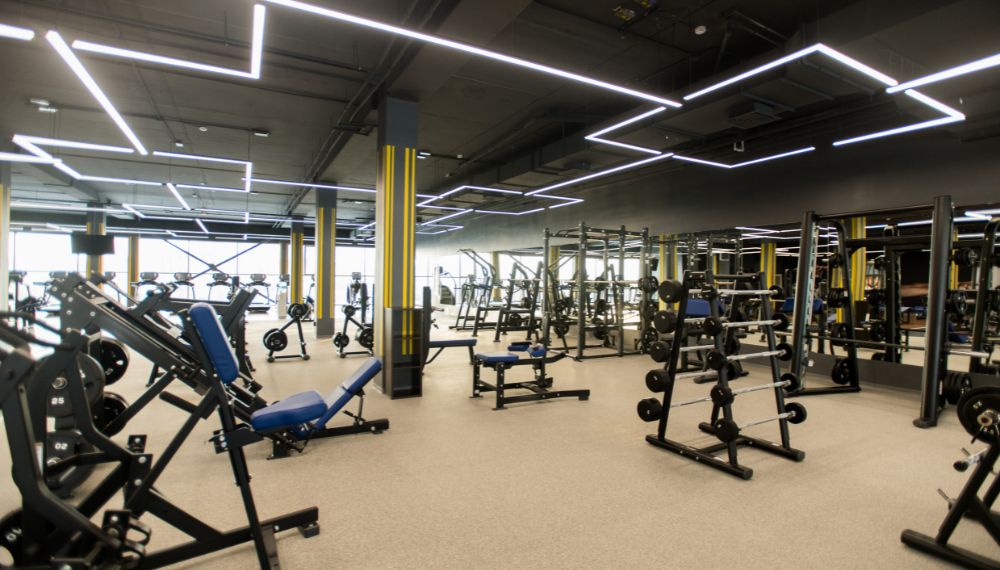Are you a fitness business owner looking to flex your financial muscles and optimize your tax savings? Imagine being able to invest back into your business while minimizing your tax burden. As a fitness entrepreneur, navigating the complex world of tax deductions is crucial for maximizing your profits and sustaining...
Keeping Your Fitness Facility Clean: Best Practices for Safety and Hygiene
Are you prioritizing the safety and hygiene of your fitness facility? Picture this: Your gym is a bustling hub of activity, with members sweating it out on equipment, moving through high-traffic areas, and utilizing various shared spaces. In such a dynamic environment, cleanliness isn't just important; it's essential for the...
How to Easily Offer Fitness Equipment Financing to Your Customers”
Are you a fitness entrepreneur seeking ways to enhance your customers' gym experience while boosting your business's bottom line? Offering fitness equipment financing could be the game-changer you've been looking for. Imagine being able to provide your clientele with top-notch gym gear without straining their wallets. With the right financing...
Essential Insurance for Fitness Businesses: A Complete Guide
Are you the heartbeat of a fitness empire, sweating it out to sculpt a thriving business? Like any endeavor, your fitness business is not immune to risks and uncertainties that demand a safety net. Enter insurance – your ally in this adrenaline-fueled terrain. Imagine a world where every squat, every...
Expand Your Reach: Networking Tips for Fitness Experts
Are you a fitness expert looking to broaden your horizons and expand your influence within the industry? Imagine the potential growth and opportunities awaiting you by leveraging the power of networking. In the competitive landscape of the fitness world, building meaningful connections is not just beneficial – it's essential for...
How to Create a Strong Gym Brand Identity
Are you ready to carve a niche in the fiercely competitive fitness market? Crafting a robust brand identity is not just an option but a vital cornerstone for any fitness business aiming to thrive in the industry. Your brand is more than just a logo or color scheme – it's...
Elevating Customer Experience in Gyms: Key Tips and Tricks
Are you ready to transform your gym into a customer experience powerhouse? Imagine a gym where every member feels valued, supported, and motivated to achieve their fitness goals. Elevating Customer Experience in Gyms: Key Tips and Tricks delves into the heart of successful gym management, focusing on the power of...
6 Best Gym Member Management Software in 2024
Are you tired of managing your gym membership manually, drowning in administrative work instead of focusing on your members' experience? In today's fast-paced fitness industry, efficient gym member management software is not just a luxury; it's a necessity to streamline operations and boost customer satisfaction. To alleviate the pain points...
Effective E-commerce Strategies for Fitness Brands: Driving Sales and Engaging Customers Online
In today's digital age, the fitness industry is booming like never before. With more and more people prioritizing their health and wellness, fitness brands have a unique opportunity to connect with customers online through e-commerce platforms. Whether you're selling workout gear, supplements, or virtual training programs, having an effective e-commerce...
Incredible Ideas to Supercharge Gym Member Retention
When considering marketing for your gym, your immediate focus often shifts to attracting new members. And you may also get a high value of new customers. Still, as a business, you have to consider that gyms are not uncommon to face high attrition rates, primarily due to a rapid turnover...
Hot Fitness Business Opportunities in 2023
As the health and fitness industry continues to flourish, the need for novel and creative fitness business concepts is on the rise. With more people prioritizing their wellness and adopting an active lifestyle, the business prospects in this field have never been more encouraging. Whether you're an experienced fitness professional...
Top Things to Know When Starting a Fitness Center or Gym
If you've ever considered starting a fitness center or gym, where individuals can improve their fitness and well-being, there are key factors you should be aware of. Launching a fitness center or gym is like a system where products and services combine together to create a business. For that, you...
Amazing Business Hacks for Gym Owners
Running a gym can present its challenges but rest assured we've got you covered. We've compiled a list of business hacks for gym owners specifically tailored to help simplify operations and accelerate growth. These strategies are designed not only to attract fitness enthusiasts to your gym but also to give...
Top Fitness Industry Trends to Watch in 2023
Are you excited about the future of fitness? In 2023, the fitness industry is filled with new and exciting things that will change how we stay healthy. It doesn't matter if you love exercise or are just starting out, this year has fantastic trends that will make you happy, healthy,...
Top Gym Management Systems and POS Systems for Gyms
Are you tired of dealing with lots of paperwork and complicated systems to manage memberships, billing, and booking personal training sessions at your gym? Well, we have some great news for you! There are special software systems designed to help gyms run smoothly and efficiently. They can handle tasks like...
What is Cash Flow Banking?
Cash flow banking is a term that is used to describe the process of maintaining positive cash flow in a business. This is done by ensuring that the company's expenses are less than its income. It can be difficult for small businesses to maintain positive cash flow, as they may...















